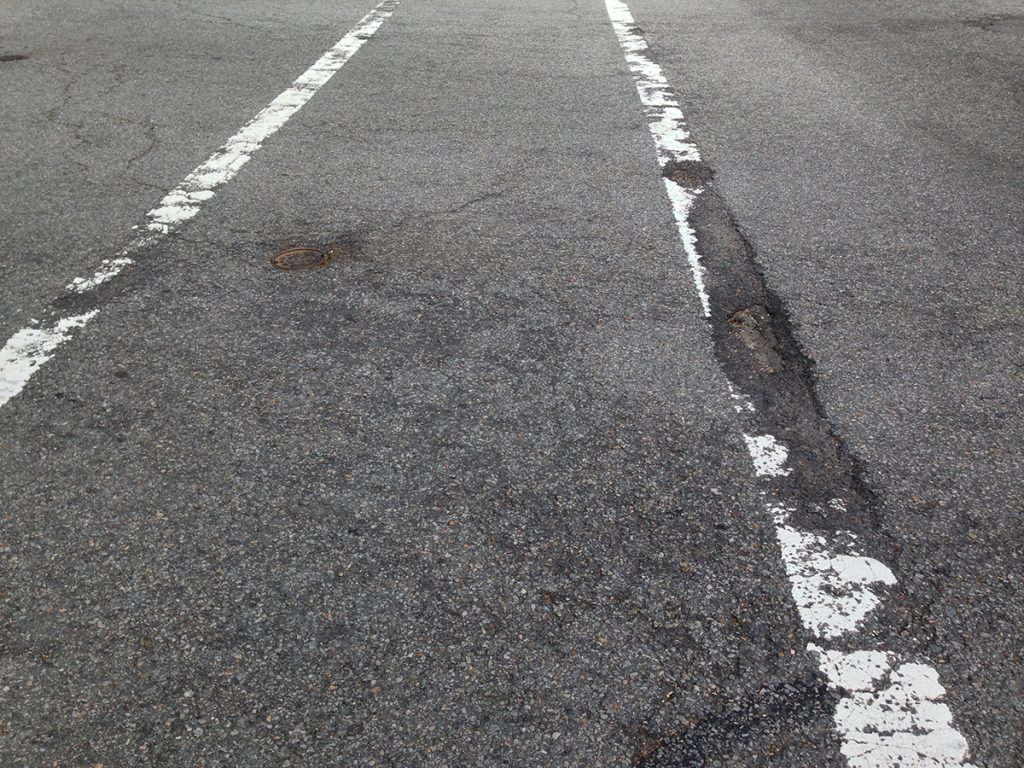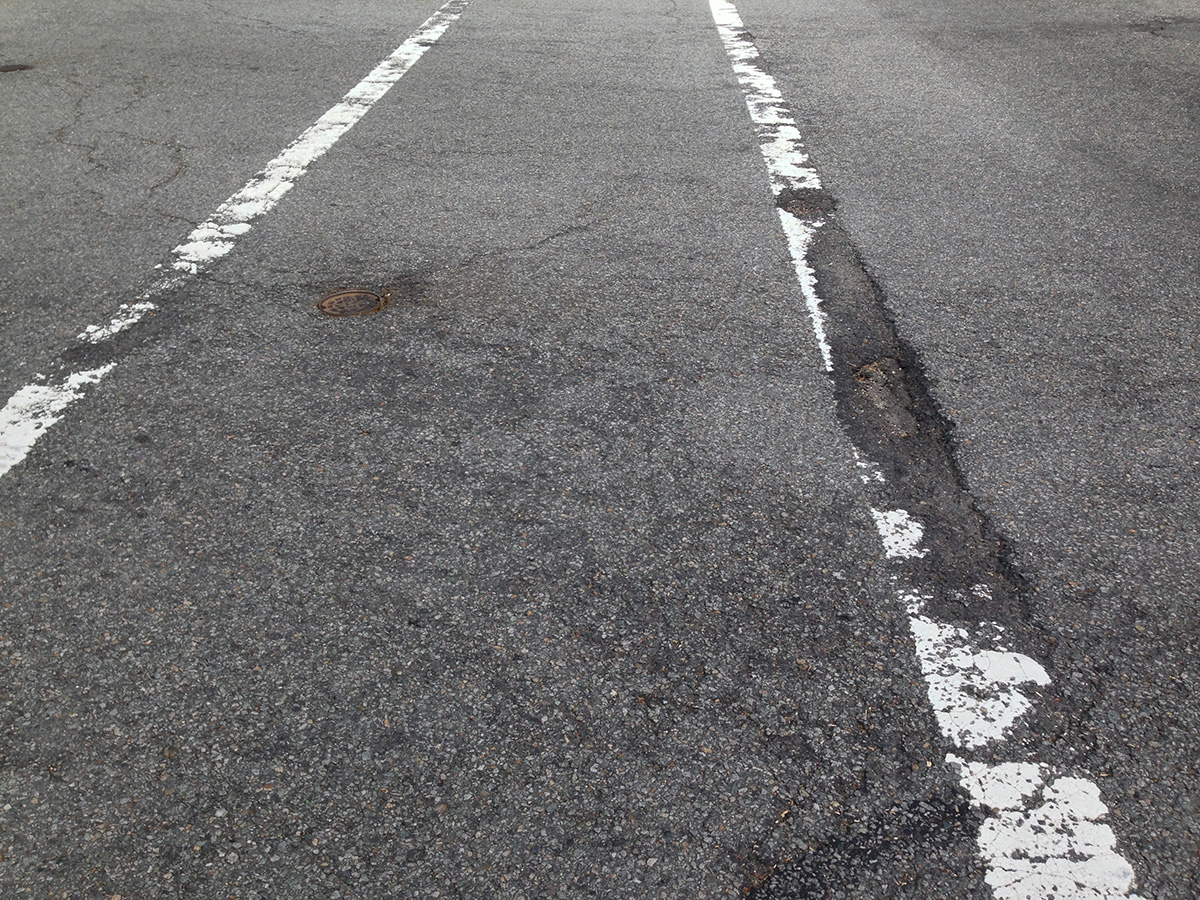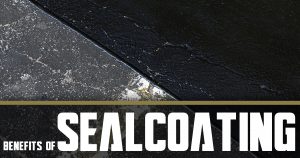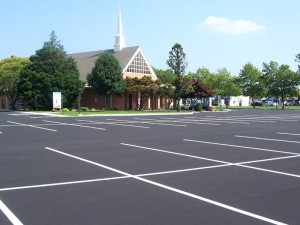
With professional installation, regular maintenance and repair by a reliable professional contractor, your asphalt should last for many years to come. That being said, if you live in an area with heavy traffic, ongoing construction, and unpredictable weather, then you may have experienced asphalt raveling. Asphalt raveling is one of the most common issues people experience with their driveways and parking lots. However, while it is damage to your blacktop, raveling repair won’t cost you an arm and a leg. Asphalt surface raveling is one of the most easily repairable and preventable issues. Before you call your asphalt contractor, learn about what causes raveling, how it can be fixed and how to prevent it.
What Is Asphalt Raveling?
Asphalt raveling occurs when small cracks expand and allow water and debris to permeate the surface. When this happens, the hot mix asphalt begins to disintegrate causing the stone aggregate begins to break free from its bonds. This compromises the foundation of the pavement as broken pieces become bigger and bigger until they are potholes. Asphalt raveling results in loose debris on pavement and roughness. It can also cause water to pool in the raveled locations, which can result in vehicle hydroplaning and loss of skid resistance.
This condition typically occurs with older pavements that have already oxidized or when a poor quality mixture was used.
Causes of Asphalt Raveling
There are a number of factors that can lead to asphalt raveling.
Compaction
Proper compaction is essential to creating a strong foundation for your asphalt driveway or parking lot. In general, the hot mix must be applied at a minimum of 290℉/98°C for it to sufficiently bond with the ground that it is being laid on. Lower temperatures will give you compaction that is weak and unstable.
Segregation
This is a naturally occurring phenomenon for asphalt pavement. It is the result of varying sizes, shapes, and densities of the underground particles. It is when segregation becomes too expansive that you have a problem. This can weaken how well the hot mix functions, resulting in pieces of aggregate separating from the whole. Keep aware even if the particles segregating are small. If fine pieces are detached from the whole, there will be a lot of unsupported empty space left. With a weakened foundation, the binding agent will struggle to hold together larger pieces.
Poorly Formulated Mix
When creating an asphalt mix, there isn’t one go to formula. Factors such as local climate, current temperatures, local traffic, and the property type have to be considered. Areas with heavy foot traffic or vehicular traffic require a mixture that can withstand the weight of several vehicles at any given time. With the wrong mix, the asphalt could cave in on itself or collapse. Certain locations also need to take seasonable weather patterns into consideration.
Moisture
Small levels of moisture in the air and on the ground are acceptable when installing asphalt. It is when there is too much moisture that you will have a problem. Too much moisture will prevent the binding agent from doing its job. Most professional asphalt contractors will avoid laying fresh asphalt on a rainy, snowy, or extremely humid days.
Dust Coating
You may not think of dust as a thing to watch out for. When the aggregate is improperly applied and maintained, dust can accumulate on the surface. When this happens, it makes it impossible for the binding agent to form a strong, durable bond with the aggregate. The binding agent will stick to its initial point of contact. If there is a layer of dust, then it will stick to the dust. Over an extended period of time, the fine and large aggregates will start to crumble.
Traffic
With busy and high traffic locations, raveling repairs will need to be done more frequently regardless of the quality or durability of the aggregate. How often your asphalt is used and what it comes in contact with will naturally degrade the mixture over time.
Tips to Prevent Asphalt Raveling
As with most things, preventative maintenance is a big part of protecting your asphalt. Here are a few things you can do to prevent your asphalt from raveling.
- Track the Temperature of the Aggregate
- Remember to apply the hot mix at a minimum temperature of 290℉/98°C.
- Measure the temperature of your asphalt on a regular basis to identify potential issues before they occur.
- Asphalt Mix
- Different climates and regions require different formulas for optimal pavement function and longevity.
- Keep it Clean
- In general, remove dust and other debris and prevent exposure to harmful elements for a longer lasting, fully functional pavement.
- Before pouring, remove dust and dirt that can create a barrier between the binding agent and aggregate.
- Regularly Scheduled Maintenance
- Have a professional asphalt contractor examine your pavement at least once a year.
Asphlat Raveling Repair
The typical repair for raveling is to overlay the area with a new layer of fresh asphalt. 1.5″ to 2″ of new asphalt is recommended. Supreme Sealing has specialized in sealing, asphalt and pavement repair in the Western New York community for more than 25 years. With the cost of new blacktop and blacktop repairs steadily rising over the past few years, the need for crack filling (hot liquid asphalt) and seal coating as a preventative asphalt maintenance measure, has never been more apparent. For an estimate or consultation on any of the services we provide, please call our office at (716) 681-5262. Or you can fill out our contact form and we’ll get back to you as soon as possible.


